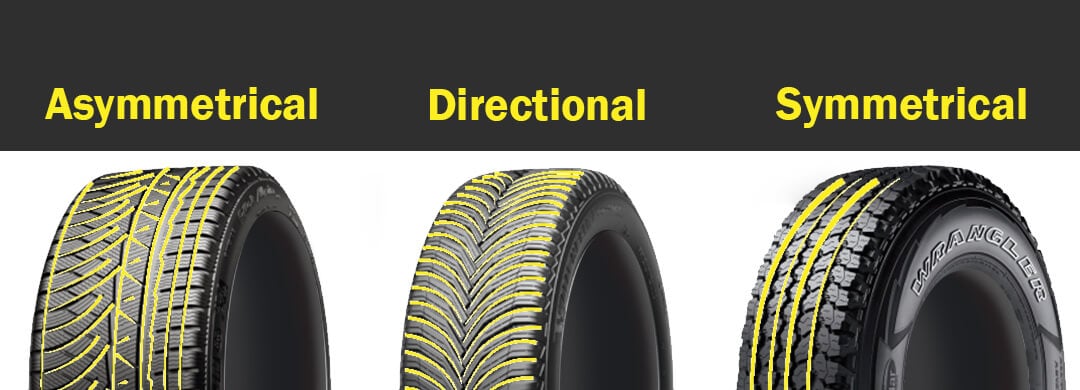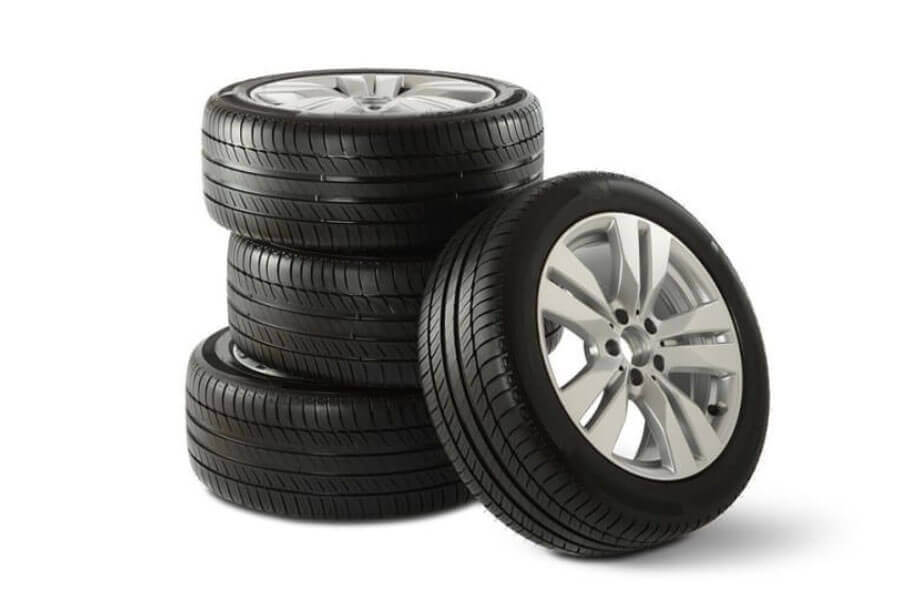Something you may not know as tire owner, is that some tires are directional, meaning they have to be installed a specific way for optimal performance. If you have ever wondered about directional tires and whether those are the ones fitted on your vehicle, the easiest way to determine this is to look at your tires.
If you see an arrow printed on the sidewall of your tire, then you own directional tires. Directional tires have been manufactured with a tread pattern that points specifically in one direction of travel.
If you have discovered you have directional tires on your vehicle, then you might be wondering what their features and benefits are.
In this blog, we will give you some expert tire information and advice, direct from the team at blackcircles.ca, to help you understand what directional tires are, how to identify and install them, and answer any other questions you might have if you are planning on buying a set of directional tires in the future.
What are directional tires?
You might be wondering, what exactly are directional tires. These tires are called “directional” due to the direction of the tread pattern on the tire itself, and the fact that they have been manufactured to run optimally in one direction only. This is different than the other two types of tread patterns – that being symmetrical and asymmetrical. What makes a tire directional is that the tread on this tire is specifically designed to travel in only one direction – the direction that is designated by the arrow on the outside of the tire sidewall.

So now how to tell if you have directional tires?
The easiest way to tell if you have directional tires is to physically look at the tires on your vehicle (or online, or at the store) and if it has a directional tire arrow printed on the sidewall, then your tire is directional. The directional tire markings only appear on one side of the tire, so, if you have recently purchased a vehicle and don’t know if your tires are directional (and you have suspicions they are, due to the look of the tread or tread wear) then you may want to check the other side of the sidewall just to be sure.
You can also tell a directional tire by looking at the tread, which is designed in such a way that it is obvious the tire works best when moving in one direction, with the tread having a solid ribbed centre with V-shaped pattern, coming out at an angle from the centre.
Are all-season tires directional?
Directional tires are available in all types of tires, such as winter and summer, but are most often found in the all-season tire range. If you drive regularly in an area of Canada that is subject to significant rain or light snow in all seasons, and you want really high performance and handling (for your performance level vehicle), while still maintaining safety, then you may want to look at buying directional all-season tires.
Pros & cons of directional tires
You may be wondering what the pros and cons of directional tires are. Here, we ask the expert team of tire sales professionals at blackcircles.ca for their advice.
Pros of directional tires:
- Increased traction, handling and performance on wet and dry road conditions.
- Can help reduce incidents of hydroplaning, due to the tire’s ability to evacuate water rapidly from the tread.
- Excel at high speed handling, with better cornering and better road grip.
- Directional tires have been tested in snowy conditions as well, and make a great choice for anyone driving a sports car, or smaller type vehicle in this type of weather conditions.
Cons of directional tires:
- Directional tires must be installed properly, with the arrow of direction facing the direction of travel (the way the tire rolls).
- You cannot rotate directional tires like most tires -- the only way is to move the front to the back, and vice versa, which often doesn’t increase longevity on today’s front wheel drive cars (and doesn’t work if you have two different tire sizes on the front and back axles).
- If installed incorrectly, the tread will wear out more quickly, and unevenly.
Can I put directional tires on backwards?
As a vehicle owner, you know that you need to regularly examine your tires for signs of wear. Quite often, regular, symmetric tires can be rotated to get a bit more life from them. This is actually not the case with directional tires. Generally, directional tires are purchased by drivers who are looking for a high level of traction, and this level of traction has been tested by the manufacturer.
If you were to ever mount a directional tire on backwards, you would not receive the benefits of the high level of traction offered by this type of tire. And, if you mounted your directional tires backwards when the tire tread is low, you could actually put yourself in a dangerous situation with traction.
What happens when you put directional tires on backwards?
If you were to mount directional tires on your vehicle backwards, you would not experience the tire’s true value – the high level of traction provided in both wet and dry conditions. In addition, if you damage these tires, it is possible that you will not qualify for the manufacturer’s warranty, because you did not mount the tires properly.
There are also a number of tire manufacturers that note that you can possibly cause damage to your vehicle if you mount the tire backwards. Now, while not all these claims have been proven, there are studies that show that you can experience significant traction issues in wet conditions if you drive with your directional tires installed backwards.
And, of course, if you are a person with a higher end sports car, that is equipped with directional tires, and you take your car out onto supervised tracks (closed courses) to drive at higher speeds, then you should never mount these tires backwards. A directional tire mounted backwards travelling at high speeds can be dangerous.
In some cases, directional tires can be switched from side to side, but generally this is only done when you, as a vehicle driver, suspect you might have an issue with your alignment or feel you may be having an issue with your tires. Switching directional tires for these reasons is best done under the supervision of a proper repair shop. It is best to only switch directional tires from side to side for a very short time, and only for testing purposes.
My directional tires are facing the wrong way, what should I do?
If you have recently purchased a vehicle, and you suspect the directional tires have been put on wrong, then if you feel you have enough information, you could reinstall the tires yourself. Or, for full confidence, and to truly make sure your directional tires are not mounted backwards, then it might be best to take your vehicle into an automotive repair centre. It’s just not worth the risk running directional tires backwards, because you may just run into an issue with having the proper traction for your vehicle.
If you are in the market for new set of tires, and have been considering buying directional tires, but need more information before making your tire purchase decision, then please reach out to the expert and friendly team at blackcircles.ca by email, phone or online chat. Our team can explain to you the pros and cons of directional tires, give you a selection of brands you can consider, and help you make your decision.







